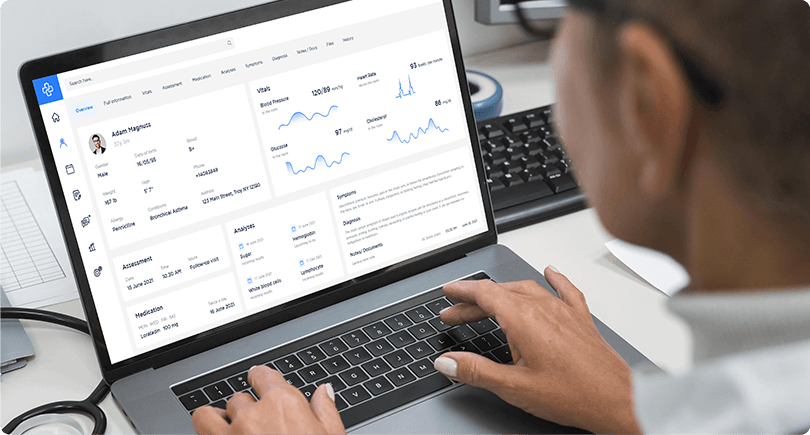Medical EHR systems are a repository of people’s health information stored digitally. The data contains personal information, like age and weight, test results, allergies, immunization records, previous surgical procedures, and billing information. With the rise in virtual care, Medical EHR software in healthcare has risen.
Digitizing this information through medical EHR software simplifies access to informed decisions. Moreover, it simplified the electronic medical records service by automatically updating new tests, diagnostics, or procedures. Medical information software improves the quality of medical care and patient experience.
Transitioning from paper to electronic medical records software through healthcare data integration is quickly becoming a mandatory requirement among healthcare institutions. The advantages of electronic medical records software in medical billing are multiple and can create holistic improvement across the organization. Paperwork will turn into a thing of the past, and the deployment of integrated medical records programs will go a long way in maintaining compliance standards.
Almost every electronic medical records system is geared with coherence, strict security systems, telehealth offerings, and remote patient monitoring systems. Here are the top trends of current electronic medical records EMR software, from virtual access to care easier systems to patient engagement systems.
1. Holistic Integration
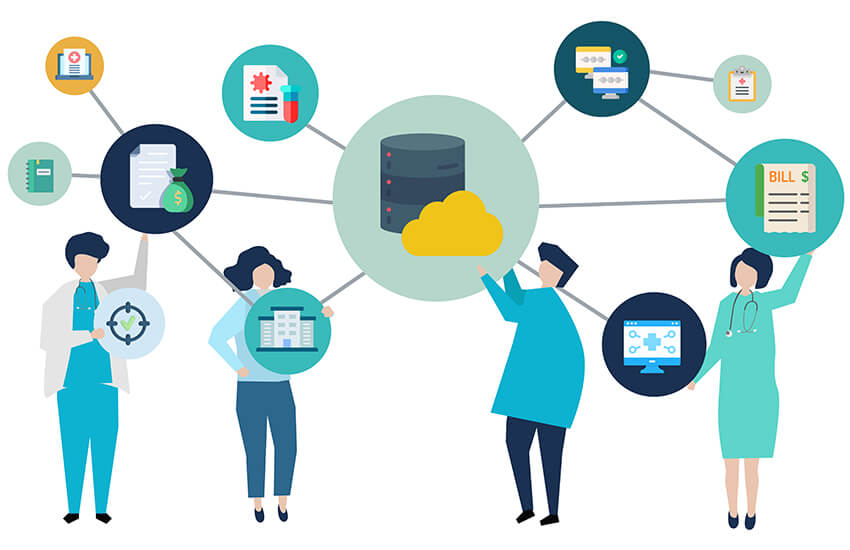
Medical EHR systems are incorporating a holistic strategy of integrating the medical EHR software into the entire workflow of medical organizations like hospitals or physician practices. This reduces redundant tasks and overall efficiency within the healthcare organization. However, it has been repeatedly observed that implementing medical EHR systems across every dimension of the organization, allows physicians to diagnose a patient better, speed up the care process, and optimize the overall healthcare management. In the long run, a dynamic medical records system reduces costs and improves revenues.
2. Centralized Databases
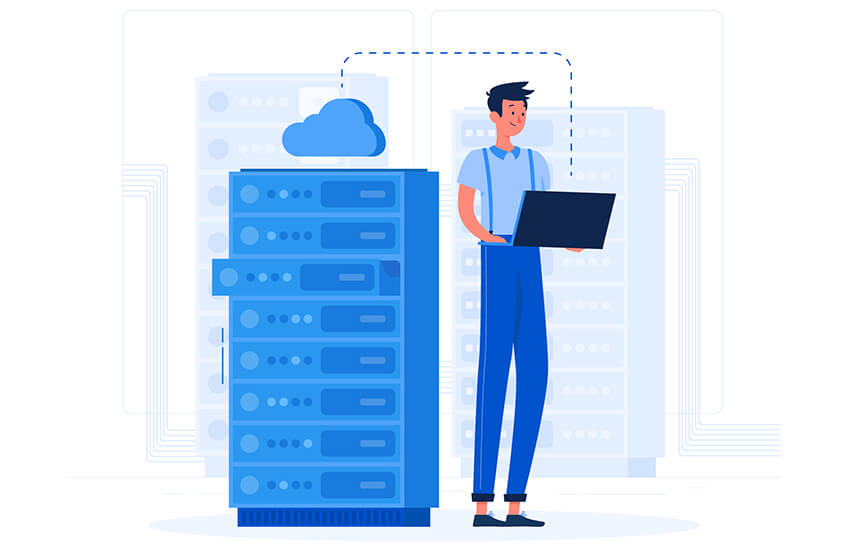
Centralized databases that carry medical charting systems within the medical records program are now being established. The electronic medical charting system enables patient medical information to be stored in a central database, from where it can be accessed with a few clicks. It helps doctors retrieve a patient’s medical history and even deploy healthcare analytics solutions to have a complete picture of patient health.
3. Virtual Care Accessibility
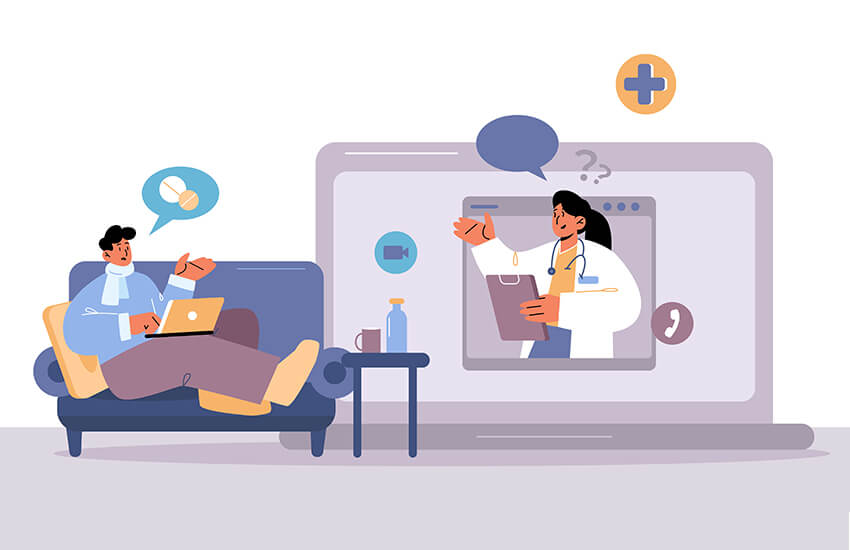
Health access still needs to be improved in many areas, especially remote locations, and villages. Electronic medical charting systems are now being created to allow patients to reach out to physicians anytime from anywhere. They can have virtual consultations through video calls or chatbots. Doctors can promptly identify high-risk patients and help them manage their health better.
4. Integrated Care
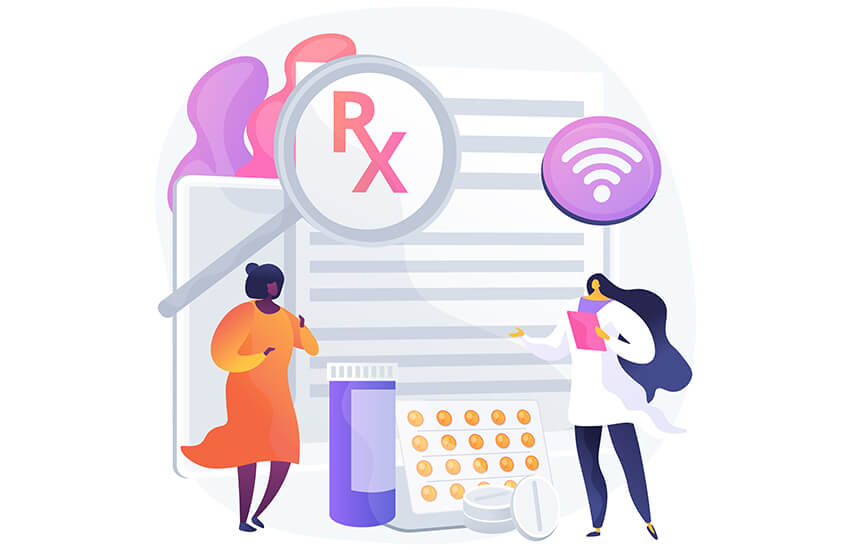
Moreover, integrated medical EMR systems are helping doctors draw meaningful insights into public health and help experts implement effective strategies for population health management. Providers see greater revenues from streamlined workflows and automated processes through holistically functional medical records systems.
Integrating pharmacy and prescription management with medical charting systems offers increased efficiency to pharmacy processes through automated prescription filling and procurement. Medical EMR systems, merged into financial billing solutions, significantly reduce hospital process errors through automated solutions. Reduced paperwork and increased employee satisfaction are big advantages of a holistic electronic medical records system.
5. Cross Platform Functionality
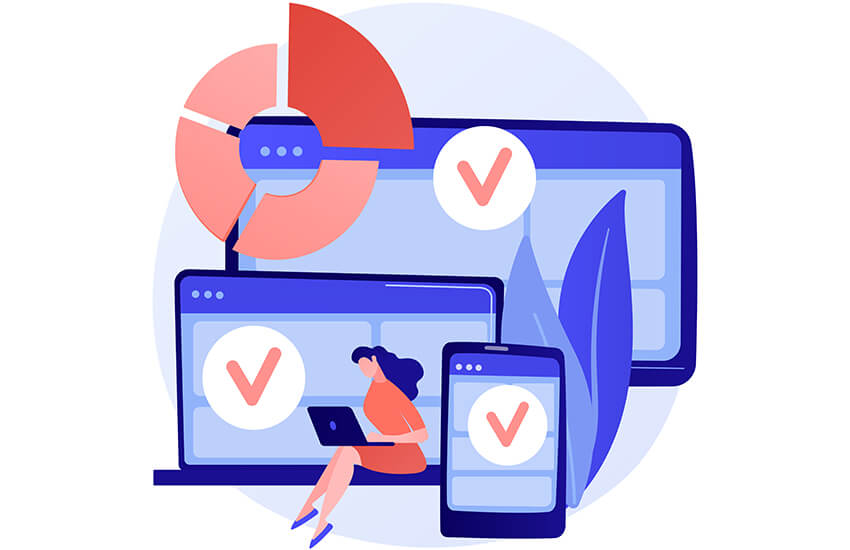
Medical recording software is being designed for cross-platform mobile EMR medical functionality. Medical recording software is being seen increasingly with MVPs of patient EMR systems for an overall purview of electronic health records software solutions.
With the application of EMR systems in healthcare, medical app development companies are continually innovating toward multi-purpose applications. Cross-platform functionality is likely to develop and fulfill multiple requirements for patients and providers alike in the avenue of virtual care too.
6. Advanced Interfaces
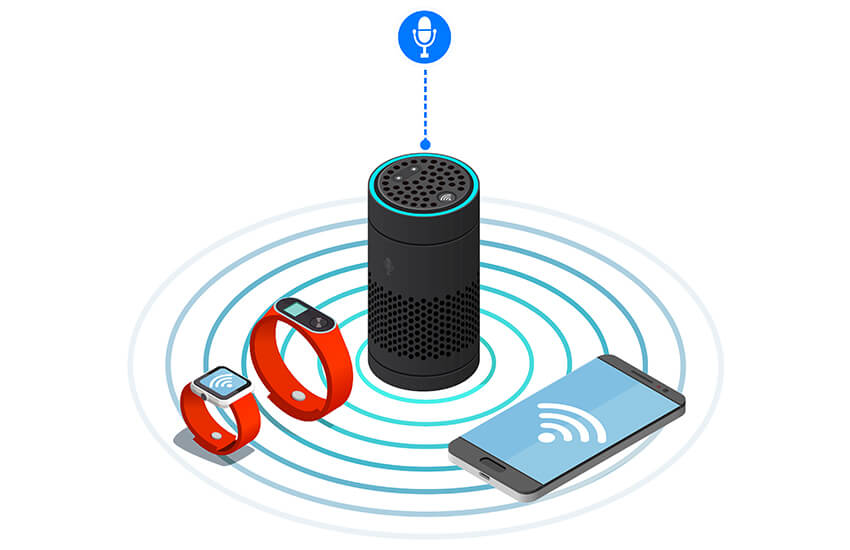
Software for medical records within mobile EHR applications is now all about using advanced interfaces. Medical software EMR can no longer be based on traditional designs with plain interfaces. While maintaining natural communication patterns and simplicity of use, touchless interfaces are the current hype around software for medical records.
EMR medical systems solutions can be advanced to offer voice-driven interfaces in electronic records software. With a rise in voice partners, such as Siri and Alexa, it is only a matter of time before this trend is universally established across EMR medical systems. Touchless UIs are already seeing significant movement in wearable devices of electronic medical records software solutions.
Avant Garde Security:
Continuing with last year’s trend, the focus remains on HIPAA-compliant solutions in medical reports software. While HIPAA compliance is integral to electronic health record applications, patient health data is sensitive.
EMR – electronic medical records software should be powered with agile authentication techniques to access open-source electronic medical records, including face recognition, fingerprinting, and more. Security of electronic patient engagement systems is now likely to remain at the forefront of cloud-based EHR software.
Wearable Devices:
Remote Patient Management (RPM) is evolving rapidly in medical records management. Patient monitoring outside a typical clinical setting is the need of the hour. Wearable devices that can enable real-time tracking through healthcare interoperability poised for disruption, such as mobile telemetry and continual monitoring software.
Electronic medical records systems for hospitals are swiftly adapting to virtual care strategies that can be enabled through medical charting software, chatbots, video conferencing, etc. Peripheral medical devices can be used and controlled remotely to enhance mHealth opportunities.
Predictive Analysis:
Healthcare is witnessing a massive increase in predictive analysis of multiple dimensions of healthcare, such as early identification of disease, tailor-made practice management, optimizing electronic data exchange, etc. Healthcare interoperability is increasingly addressing this need in medical charting software.
With the onset of cloud computing in healthcare, the need for online engagement between healthcare providers and patients can be enhanced through quantitative surveys in medical charts software. A structured framework embedded into integrated healthcare solutions will minimize patient and physician hindrances. EMR medical software companies are applying healthcare automation towards easy accessibility across the healthcare space.
7. Genomics Data Mapping
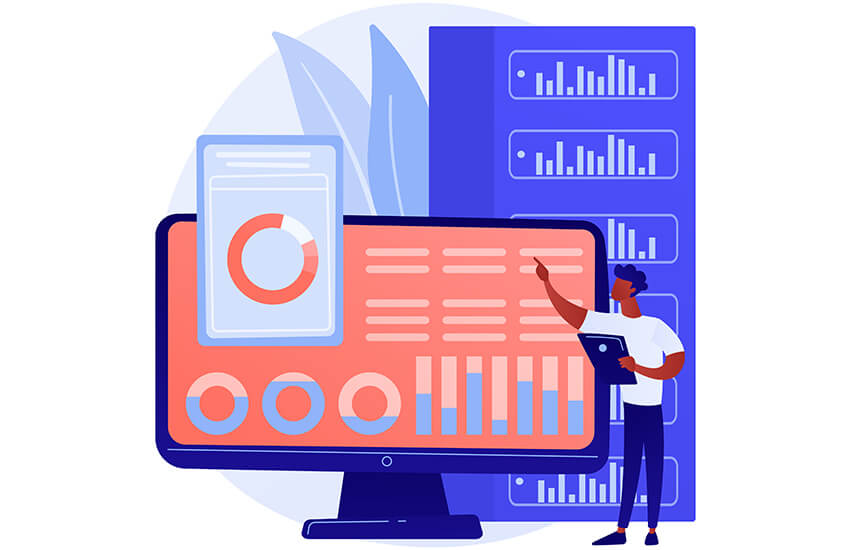
This medical EMR system trend applies customized strategic decisions through specific patients’ genomic information. Big data analytics identify relative patterns and complex correlations by efficiently examining multiple data sets to predict and prevent outbreaks.
Among the many trends in medical EMR systems, this provides accessibility that allows patients to easily engage with their physician and other clinicians for continual caregiving through integrated solutions. EMR system’s medical accessibility is enhanced through remote patient monitoring solutions embedded in patients’ devices. Furthermore, mobile electronic medical software can be deployed in offices, nursing homes, rural clinics, schools, etc. This diminishes healthcare access hurdles, such as physical commutes, appointment hassles, etc., through multiple services on medical records system software.
8. Robotic Process Automation

Owing to the demand for increased workflow efficiency and accuracy, medical records software for patients is witnessing an integration with Robotic Process Automation (RPA). Through the integration of this technology, electronic medical records and EMR systems experience high levels of accuracy due to the elimination of natural entry requirements.
Robot-based automation fixes man-made flaws in electronic medical systems while maintaining the core foundation of the software. It works by using digital labor to maintain the effective elements of the system while simultaneously resolving hurdles and errors. Through the application of intelligent algorithms, manual processes are being continually automated towards speedy resolutions and functioning.
9. Big Data Analytics
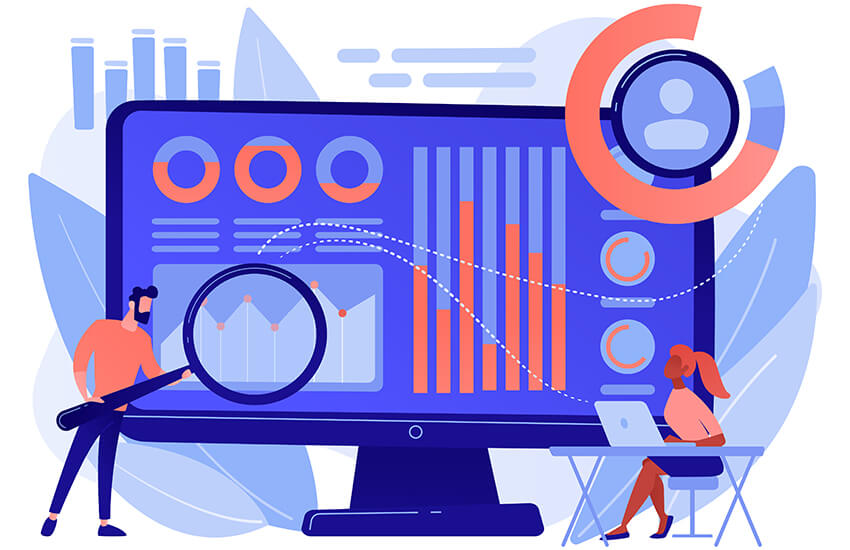
Electronic medical systems must include data collecting and processing features of all the essential specifications. EHR-enabled remote monitoring software should apply the data accumulated from the application or software towards critical and meaningful use. It will benefit clinicians in making timely care decisions. Also, it helps physicians predict abnormalities in patients’ health.
When it comes to healthcare, the potentialities of big data analytics are immense. As more and more patients volunteer health information, the ability to comprehend the role of genetics, environmental factors, and lifestyle choices toward diagnosis and predictive analysis is set to magnify by leaps and bounds. Moreover, through wearables and IoT sensors, patient populations can be transformed in numerous ways to keep the population healthy. Health tracking is significantly advanced through continual real-time tracking, EHR, video consultations, etc. Improved patient care and higher patient engagement are all enabled through this system.
10. Real-time Alerting
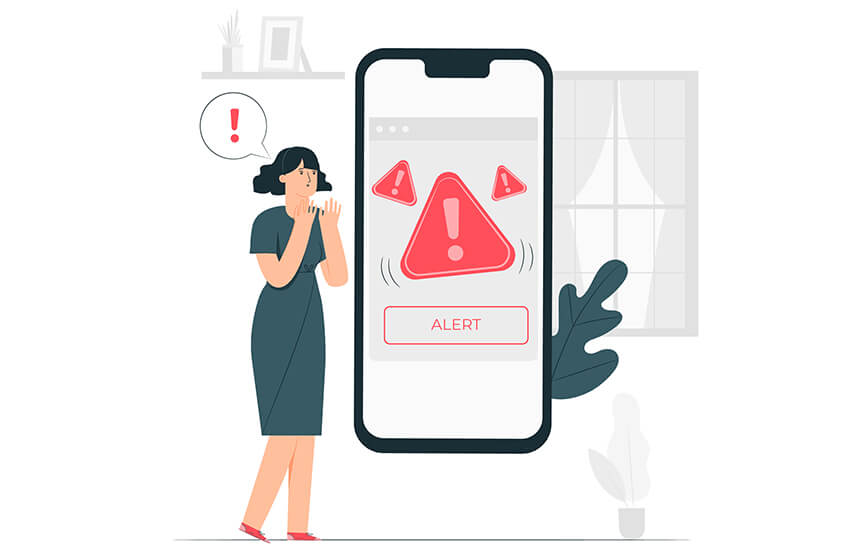
From continual patient health monitoring through real-time trackers to timely emergency assistance, real-time alerting is a growing demand in medical records systems. It is a significant aid in avoiding untimely loss of lives due to the absence of timely care. The physician uses these alerts to receive real-time information on their patient’s health conditions through an application enabled on the patient’s device. Data is generated to help providers create prescriptions and promote social awareness. Moreover, any abnormal activity raises an alert through intelligent analytics, such as when blood pressure rises or an asthma attack is identified.
Conclusion:
With the continually evolving nature of EMR, medical trends will continue to expand. In a nutshell, through acquisitions and mergers, electronic health records solutions will be empowered to make bigger offerings toward electronic health records services. EHR/ EMR development will be built around EHR interoperability solutions for an all-powerful super app.
OSP is a trusted software development company that delivers bespoke solutions as per your business needs. Connect with us to hire the best talents in the industry to build enterprise-grade software.

How can we help?
Fill out the short form below or call us at (888) 846-5382
Looking for software solutions to build your product?
Let's discuss your software solutions for your product in our free development acceleration call!
Get In Touch arrow_forwardDiscuss Your Project Handover with a team of expert Book a free consultation arrow_forward
About Author

Written by Riken Shah linkedin
Riken's work motto is to help healthcare providers use technological advancements to make healthcare easily accessible to all stakeholders, from providers to patients. Under his leadership and guidance, OSP Labs has successfully developed over 600 customized software solutions for 200+ healthcare clients across continents.







